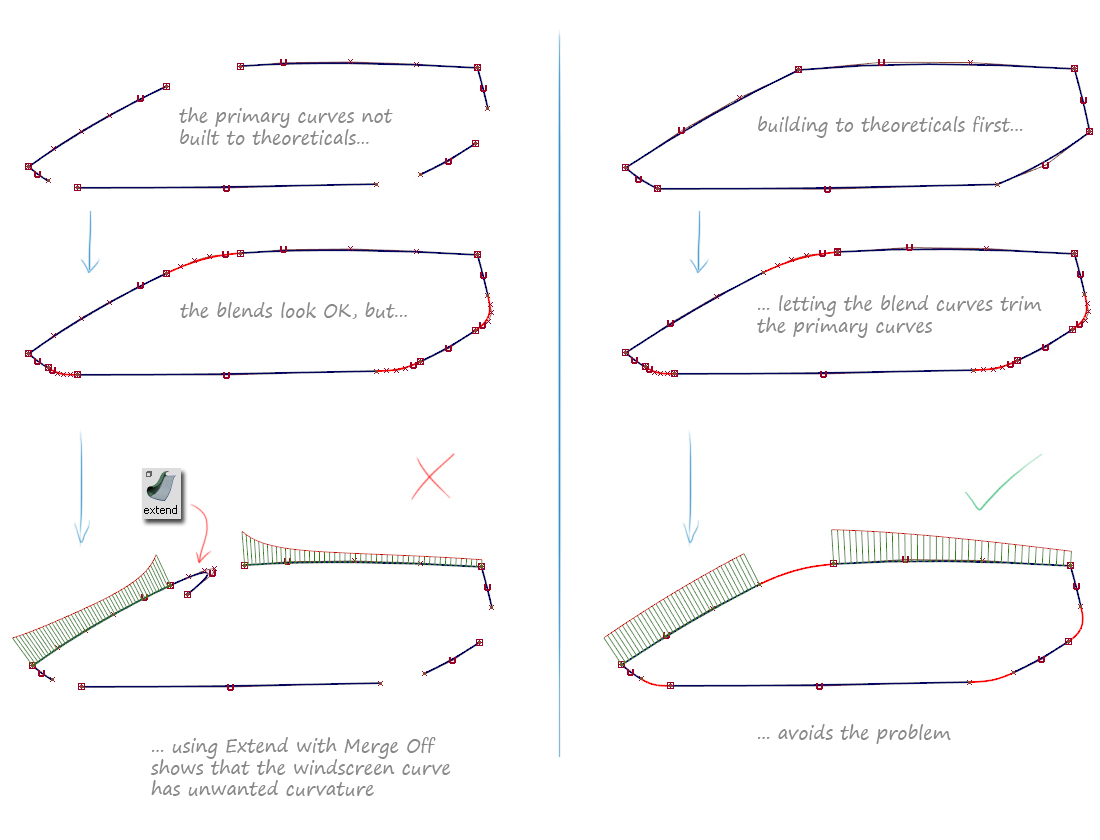'Theoretical' simply means the sharp edge before a shape is filleted or softened.
This example shows the outline curves for the side windows. They were first created to the 'theoretical' intersections, before the transitions were applied for the final design.
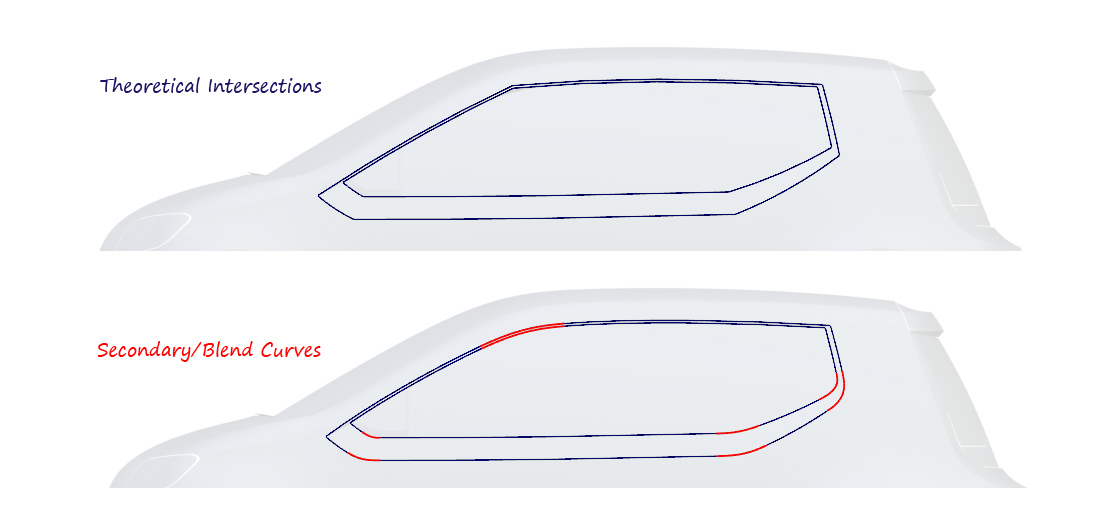
Experienced modelers start by building the Primary Surfaces to these sharp edges, or 'theoreticals', and try to build a block model with crisp edges, until the volumes are working aesthetically.

Applying the Rule
Working to theoreticals is a natural part of the sketching process. We do it to get a strong, taut line. If we tried to draw the main shapes and blends in one pencil stroke, the line would be less confident and have less tension. The same principle applies to building Alias curves and surfaces.
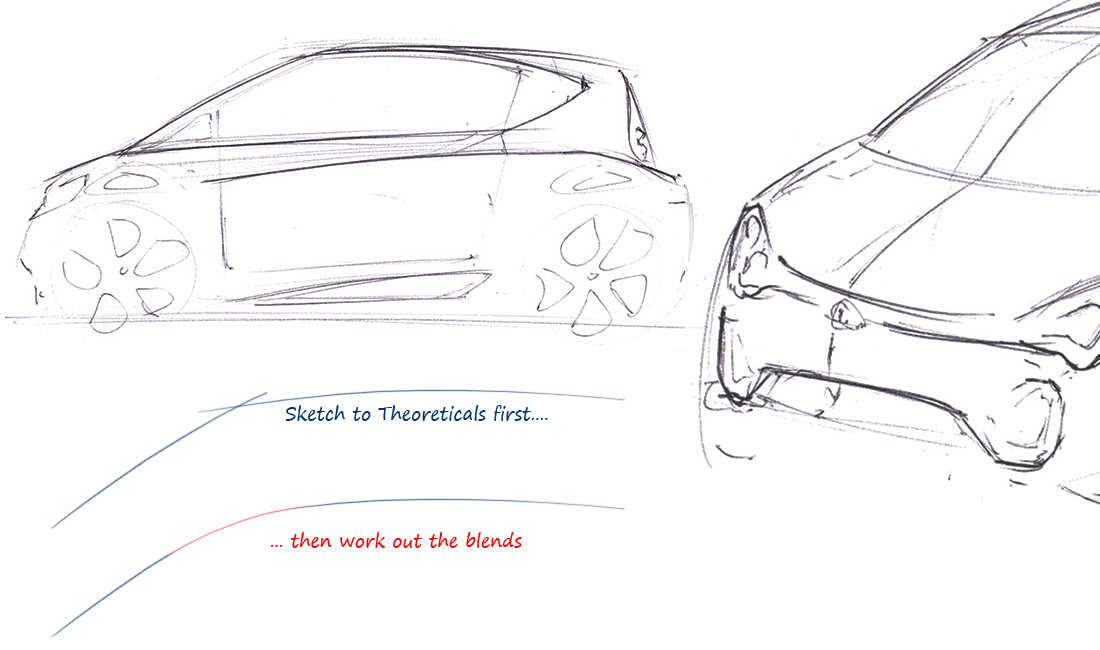
Breaking the Rule
It is common for some large blended shapes to be constructed as blends from the start, rather than strictly building to theoreticals first:

Theory and Practice
Theoreticals and Aesthetic Design
Working with theoreticals is a technique used on traditional clay modeling as well as Alias models. It's used because fillets and blends (Secondary Surfaces) can disguise the structure of the form, and it's easier to understand the volume, balance and aesthetics of your design in its basic block form (Primary Surfaces).
The fillets and blends also take a lot of time to model, and typically the design will go through many iterations before the final aesthetics are decided. It's much quicker to model to sharp edges during these iterations.
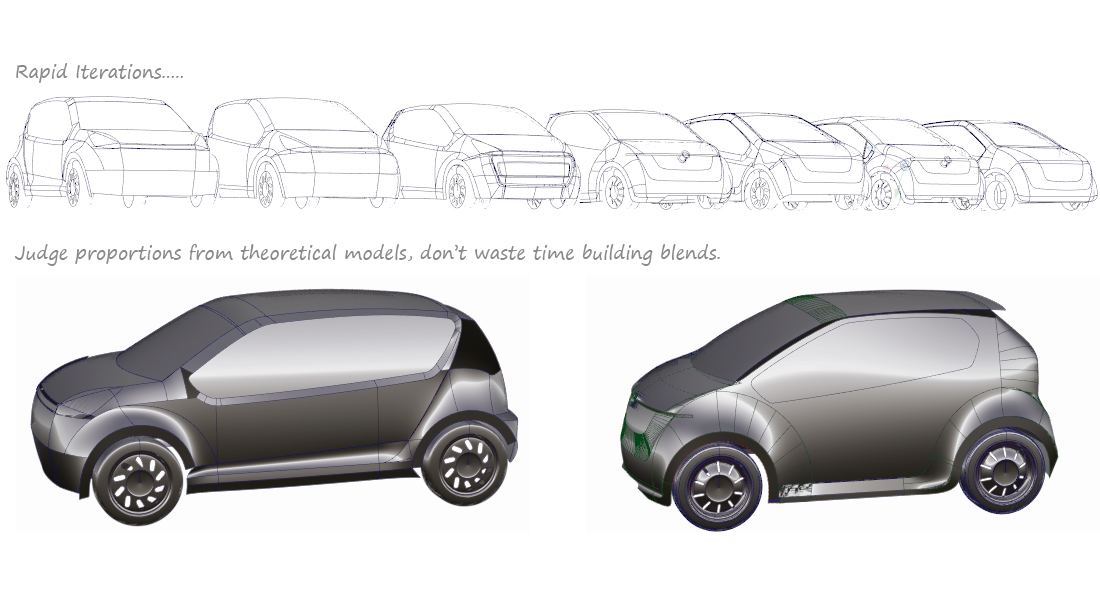
Theoreticals and Downstream Engineering
Working to theoreticals provides more flexibility to downstream process. In particular, if an engineer needs to modify a detail fillet, having the original theoretical edges allows them to make modifications.

Extendable Surfaces
Extendable Surfaces are necessary to ensure usability in CAD-Modelers like CATIA V5. The process is hidden to the user, but Part Design in CATIA V5 automatically extends surfaces. If they can't extend successfully to create a theoretical intersection, then the process will fail.
You can check if your surfaces are extendible by using Object Edit > Extend.
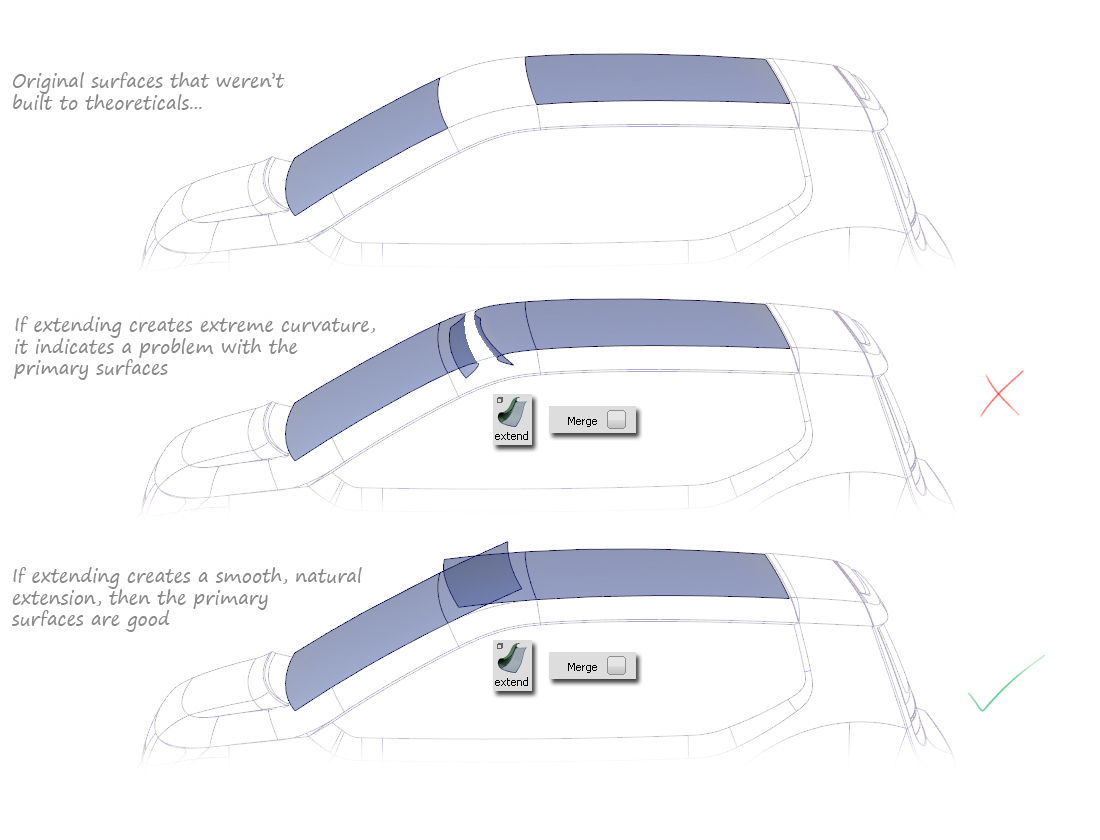
Problem Solving
You can often waste time by trying to fix fillets that don't work, without understanding that it is sometimes the underlying primary surfaces that are causing the problem. Removing the blends and checking that your primary surfaces extend to the desired intersections is a good troubleshooting technique.
Getting into the habit of building to theoretical intersections in the first place will avoid these problems.
